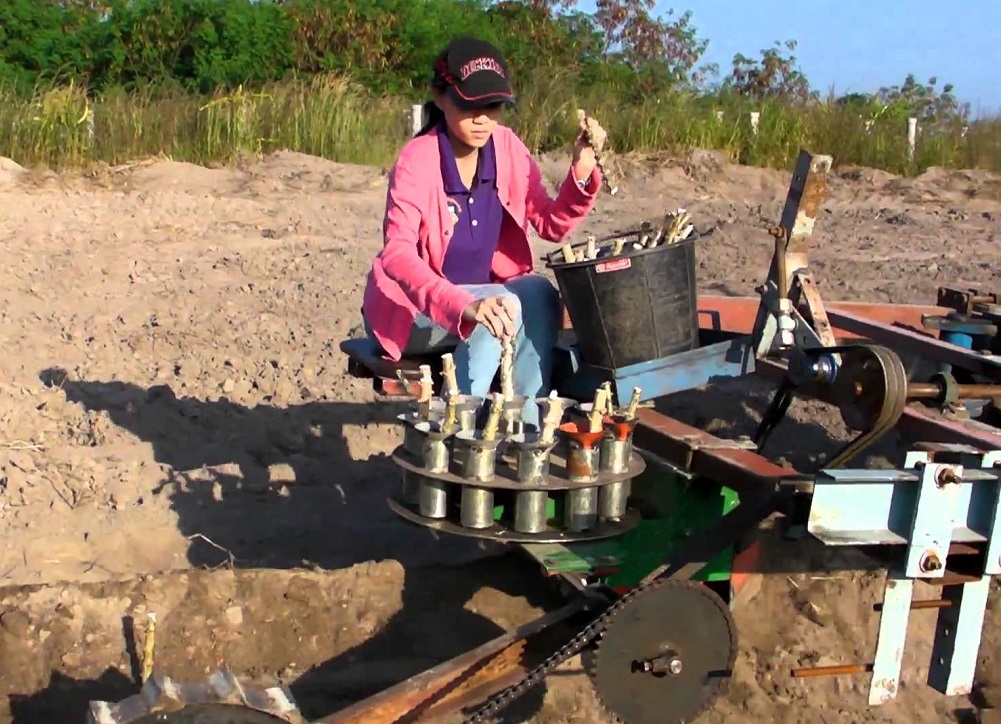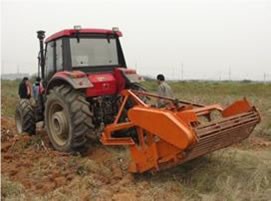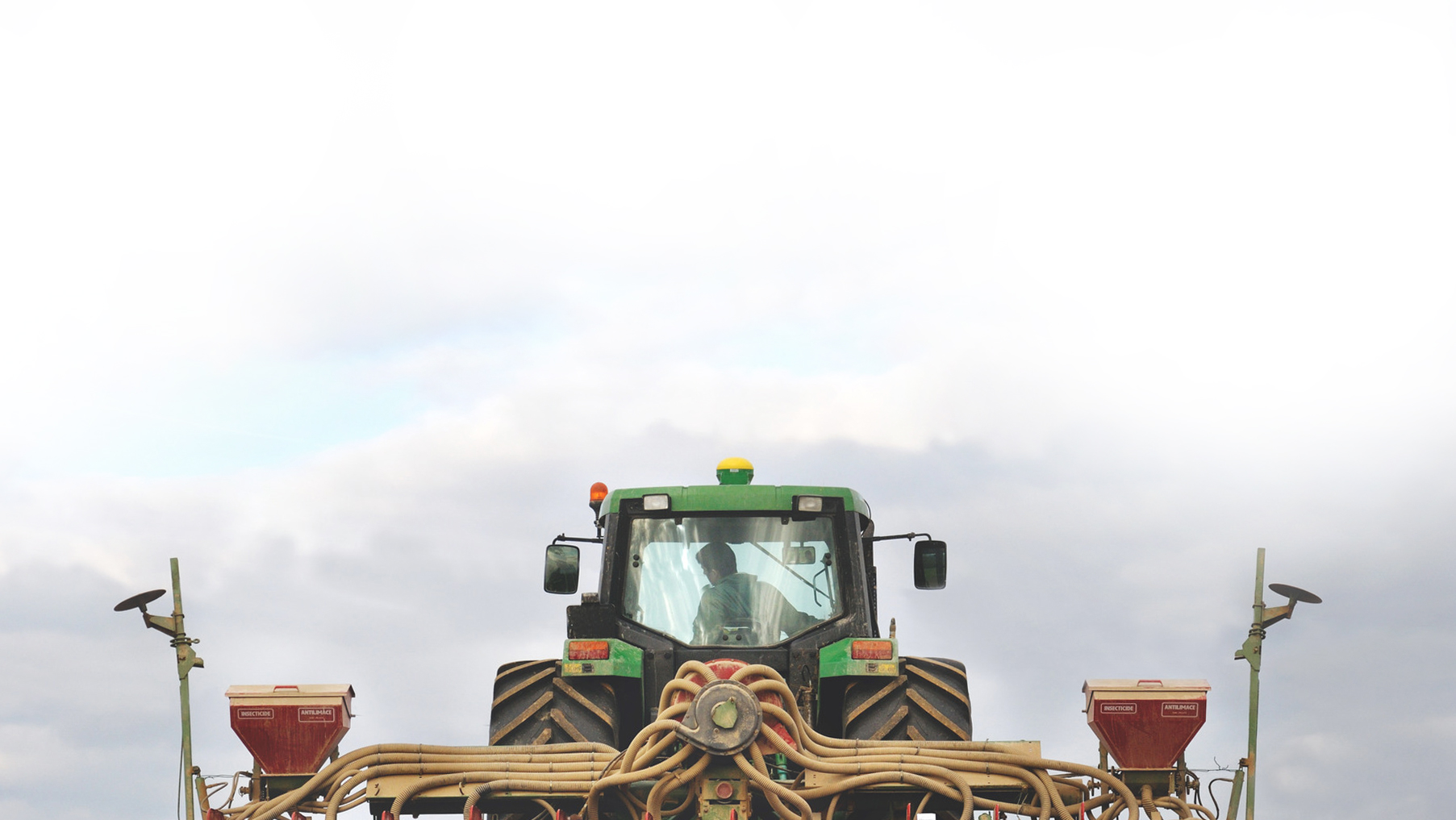Mechanization of Cassava Production Systems
Cassava, or manioc (Manihot esculenta ), is a root crop which, perhaps much to the surprise of folks outside the tropic regions of the world, accounts for approximately 30% of the planet’s production of root and tuber-based food crops; although there is a certain lack of mechanization of Cassava production. This perennial woody shrub grows to a height between 1-3 meters in height, with palmate leaves and cone-shaped roots. Starch is stored in the root, and covered with a papery bark and pink-white cortex; and the flesh of the root is a soft yellow to bright whitish color.
There are over 5,000 cultivars of this staple crop, according to climatic adaptation, and a wide range of quality-based characteristics. A hardy species, it tolerates drought stress remarkably well, and grows across poorer soil types better than most all the food crops. An interesting characteristic of its genetic makeup is that it has a strong symbiosis with naturally occurring mycorrhizae soil fungi, leading to its remarkable hardiness and tolerance to acidic, weathered soils. It also has an unequalled ability to recover from insect and disease pest pressure. It’s value in developing countries of the world lies in the fact that of all food crops, it ranks near or at the top of carbohydrate production per hectare.
On top of all that, what makes the cassava plant even more interesting to agronomists and nutritionists alike is that both the roots and the leaves of the plant can be toxic when consumed. This is because the plant produces compounds containing both cyanide and glucose (cyanogenic glucoside). Once the plant tissue is damaged, these compounds liberate hydrogen cyanide (HCN), a potent toxin (perhaps leading to its significant resistance to insects and plant disease organisms).
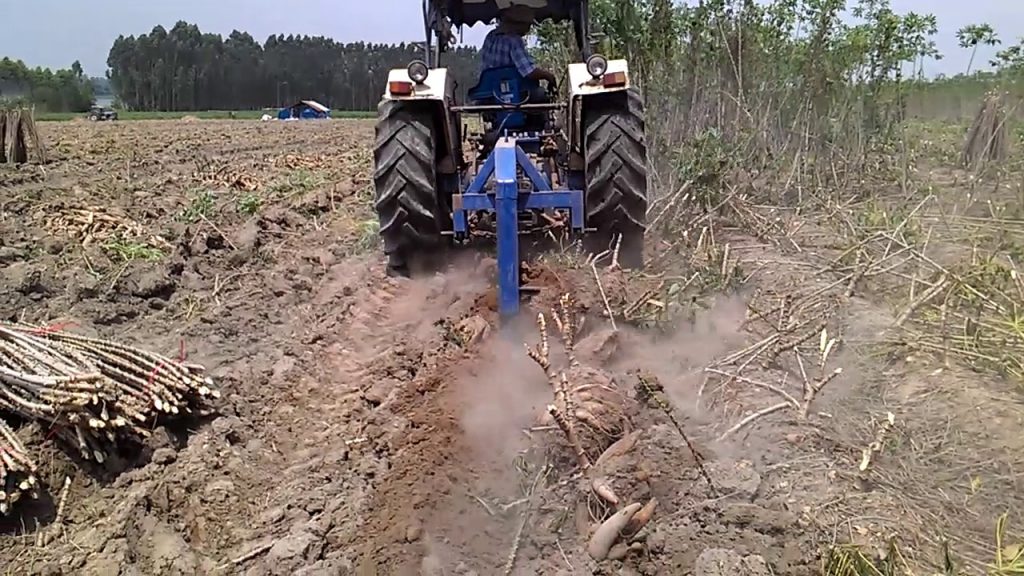
Specialized cassava harvesters come in different sizes and capacities, usually according to tractor horsepower rating and rate of work needed.
There are some varieties of cassava termed “sweet,” or low-cyanide cultivars which have lower levels of toxins in the flesh of the root, and can be cooked after peeling, just like other root vegetables. “Bitter” cassava varieties have higher levels of cyanide throughout the peel and flesh of the root and require more extensive processing before being safe to consume, including grating, fermenting, and sun drying. For reasons that don’t seem entirely clear, many farmers across the tropics prefer to grow high-cyanide varieties, whether their pest tolerance or yield characteristics, tradition, or some other reason(s).
Once the plant tissue is damaged, these compounds liberate hydrogen cyanide (HCN), a potent toxin (perhaps leading to its significant resistance to insects and plant disease organisms). There are some varieties of cassava termed “sweet,” or low-cyanide cultivars which have lower levels of toxins in the flesh of the root, and can be cooked after peeling, just like other root vegetables. “Bitter” cassava varieties have higher levels of cyanide throughout the peel and flesh of the root and require more extensive processing before being safe to consume, including grating, fermenting, and sun drying. For reasons that don’t seem entirely clear, many farmers across the tropics prefer to grow high-cyanide varieties, whether their pest tolerance or yield characteristics, tradition, or some other reason(s).
With efficient exporting and infrastructure development on the rise, agricultural equipment specifically engineered for cassava production is following suit. Typically grown by small-scale farmers using more traditional methods, and on marginal land where nothing else will grow; the adoption of mechanization has been slow to develop historically, but that could be changing.
Cassava is propagated by planting stakes cut from the stems of woody, mature plants. Planting is done prior to rain seasons so as to provide the necessary moisture during the first few months, but after that period, they are remarkably drought tolerant. Depending on climate and weather, the roots mature to harvestable size in 6-12 months; and the harvest season can last for up to 2 years after that point, adding to its value for subsistence food supply over a relatively long period of time.
Harvesting involves cutting off the top 75% of the plant, pulling the roots, and then separating them. The roots break down and deteriorate rapidly, so consumption or processing must soon follow.
Fresh roots of the “sweet” type (low-cyanide) cassava can be packaged in plastic, frozen, or sealed in wax to prevent deterioration. Typically, only the youngest leaves are picked, and generally, must be cooked the same day.
Mechanization of Cassava Production
Combining all these things to consider, tractors and attachments specifically engineered for cassava continue to evolve to assist farmers in countries of the tropics throughout the world.
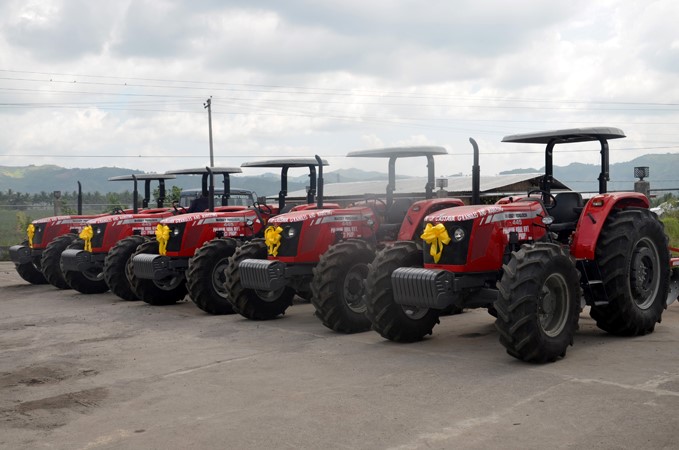
In the Philippine’s, a project funded by the Department of Agriculture’s Philippine Rural Development Project included these new tractors delivered to boost cassava production and marketing sectors in South Cotabato. Source: The Business Mirror: Tractors, machinery boost PRDP’s cassava project in South Cotabato
With more farms diversifying production across several crops, and communities working together toward shared benefit, the cost of a tractor can be spread across several crops at a time when tractor selection is done properly. If matched with production to scale of cassava, the attachments that can assist with tillage, cultivation, harvesting, and processing of this important crop can advance as well.
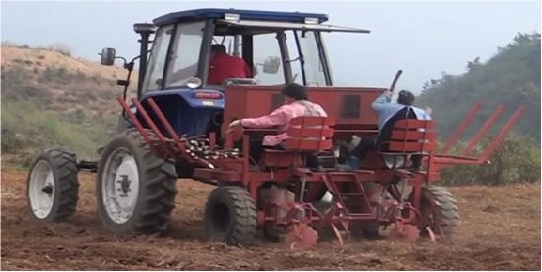
Here’s a photo of a 3-point hitch transplanting machine for planting cassava. Soil conditions at planting, equipment retro-fitting, and other factors need to be considered before matching up the proper tool for the job. Source: www.cassavamillers.com
There are several options for tillage and cultivation for this unique crop and its seasonality. Consult with your local equipment dealer, mechanic, or specialist to learn how to match up the right equipment for whatever needs you might have.
In closing, here’s an interesting video with several different pieces of equipment shown working in the field (I’m not a fan of the music etc, but I enjoyed watching the different field activities).
YouTube: new farming machines, cassava cultivation using modern machine, new agricultural technology
If you liked this article please help us by sharing on Facebook
Read more about it:
The Business Mirror: Tractors, machinery boost PRDP’s cassava project in South Cotabato
EQUIPMENT FOR MECHANIZED CASSAVA FARMING – Cassava Millers
STATUS OF CASSAVA IN THAILAND: FAO


